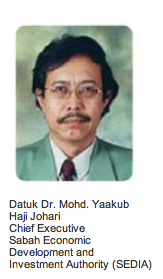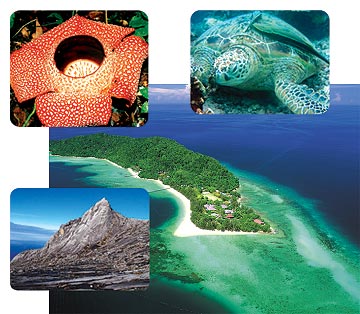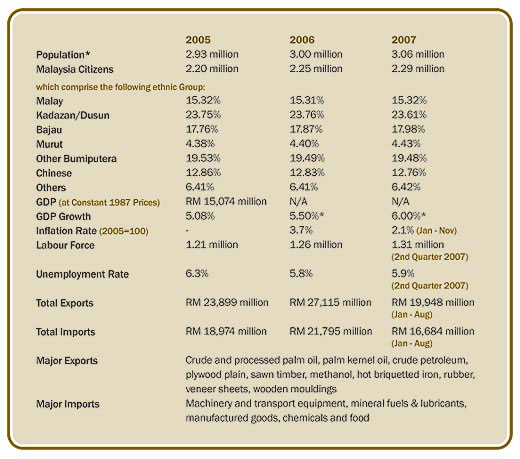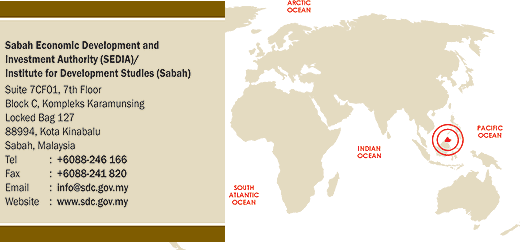Sabah Development Corridor (SDC)


The SDC will be implemented over a period of 18 years from 2008 to 2025. The goal is to turn Sabah into a leading economic region and a preferred destination for investment, work and living. The key strength of the SDC is the state’s strategic location, abundant natural resources, rich cultural heritage and access to mega biodiversity resources.
Sub-Regional Development

The development plan of the SDC will be implemented across three sub-regions namely the Western Sub-Region, Central Sub-Region and Eastern Sub-Region. The Western Sub-Region is identified as Sabah’s industrial belt. This region provides access to market, processing, packaging and port facilities. The Central Sub-Region is Sabah’s agricultural hinterland and food production belt. The focus will be on encouraging local communities to get involved in income generation activities through agriculture and tourism. The Eastern Sub-Region is a self-sufficient corridor with large hinterland, industries,ports and other related services and also rich with agricultural and biodiversity resources. The focus for this region will be on promoting agrobio research, commercial production and processing of agricultural commodity, especially oil palm. The sub-region also has a vibrant eco-tourism industry.
Development Phases for the SDC
The SDC will be implemented in three phases to reflect programme priority and sequencing. The first phase (2008 – 2010) mainly focuses on building the foundation for growth via infrastructure development as well as initiating high impact economic and poverty eradication projects. The second phase (2011 – 2015) will see economic growth accelerating through intensified higher order value-added economic activities, with the presence of global companies and a strong base of local SMEs. The third phase (2016 – 2025) is the expansion period. During this phase, Sabah is expected to emerge as an attractive destination for FDIs with strong supporting infrastructure, global companies and knowledge workforce.
Key Principles of the SDC
The development of the SDC is guided by three key principles: firstly, to capture higher value economic activities; secondly, promoting balanced economic growth with distribution; and thirdly, ensuring sustainable growth via environmental conservation.
 Higher value activities are generatedthrough downstream processing of Sabah’s rich primary commodity and natural resources, such as oil and gas, palm oil, rubber, cocoa, herbal resources and fisheries. This can be done by promoting investments in oleo-chemicals, gas processing plants, agro-industry and others.
Higher value activities are generatedthrough downstream processing of Sabah’s rich primary commodity and natural resources, such as oil and gas, palm oil, rubber, cocoa, herbal resources and fisheries. This can be done by promoting investments in oleo-chemicals, gas processing plants, agro-industry and others.
The SDC strives to promote balanced economic growth between urban and rural areas as well as between sub-regions in Sabah. The main goal is to alleviate poverty in the state. As SDC development covers the whole state of Sabah, the spillover and economic benefits under the SDC will be enjoyed not only by those living in the city, but also in the small villages. These developments are further intensified under the SDC through better provision of physical infrastructure and utilities, such as road, water and electricity.
Having one of the world’s oldest rainforest, rare wildlife and the widest genera of marine life, it is imperative for Sabah to conserve its environment and promote sustainable development. The SDC welcomes the participation of everyone, including foreign talents as well as researchers in knowledge generation, especially in conserving the states rich biodiversity as well as its ethnobotanical heritage for the benefit of current as well as future generation. The SDC also aims to promote product innovation by stimulating bio-prospecting and biotech research to spur the development of new high value industries, such as agro-biopharmaceutical industry.
The Sectoral Focus
In line with the Halatuju, the four sectors that have been earmarked as the drivers of growth in the SDC are tourism, logistics, agriculture and manufacturing.
• Tourism
The strategy under the tourism development is to target high-yield and long stay visitors. The aim is to make Sabah one of the most liveable places in the world. The SDC also plans to enhance Sabah‘s position as a premier eco-adventure destination as well as a high-end, lifestyle destination with luxury holiday villas and signature resorts. One of the targets is to encourage investors to anchor new signature tourism products and activities in Sabah, such as wellness centres, sailing activities and regatta.
• Logistics
Under logistics, the main focus will be on lowering the cost of doing business in Sabah. The strategies include reviewing the cabotage policy for shipping, providing incentives to potential investors to set up manufacturing facilities in the proposed Sepangar Free Zone (SFZ), domestic hubbing at Sapangar Bay Container Port, and positioning Sandakan as a key regional trading hub in Borneo.
• Agriculture
Under the SDC, the agriculture programme will focus on increasing overall food self-sufficiency, planting high-value crops for export and downstream processing, and assisting in poverty eradication. The programme will be designed to encourage rural communities’ participation at various levels in the agro-industry supply chain, such as in production, collection, processing, packaging, storage and distribution activities. The programme will include the promotion of science-industry linkages through optimum utilisation of science and technology, especially ICT and biotechnology.
• Manufacturing
The initial focus for the manufacturing sector under the SDC is to enhance enablers such as infrastructure and human capital. The target is to encourage foreign investment to anchor and accelerate the growth of downstream manufacturing activities in Sabah. Through this strategy, it is envisaged that Sabah will emerge as one of the leading locations of choice for resources-based manufacturing activities in Asia.
The Final Outcome
An overriding goal of SDC is to fully eradicate poverty in Sabah by the year 2025. Hardcore poverty is targeted to be eliminated by the end of the Ninth Malaysia Plan (9MP) with overall poverty halved from 23% in 2004 to 12% in 2010.
With the implementation of the SDC, Sabah is expected to experience rapid economic growth attaining a four-fold increase in its gross domestic product (GDP) to RM63.2 billion in 2025.
Unemployment rate is also expected to be reduced from 5.8% in 2006 to 3.5% by the end of 2025. The implementation of the SDC is also expected to create 900,000 new jobs.
SDC Monitoring Authority
The overall development of the SDC will be overseen by a one-stop implementation authority, Sabah Economic Development and Investment Authority (SEDIA). The state government of Sabah had passed the law to establish SEDIA on 15 January 2009. This will no doubt add further impetus to the implementation of all programmes planned under the SDC initiatives.


*Estimates
Sources: 1) Department of Statistics Malaysia, Sabah 2) The 2007 and 2008 Sabah State Budget Speech
